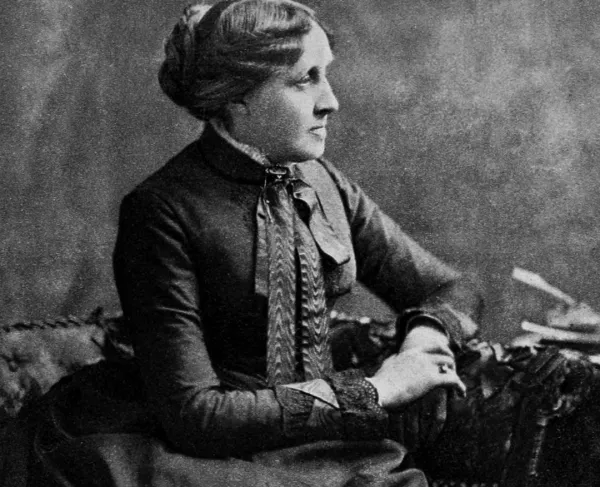Louisa May Alcott

Despite being one of the most influential American authors of the 20th century, Louisa May Alcott’s resume goes well beyond her published works.
Born on November 29, 1832, in Germantown, Pennsylvania, Louisa May Alcott was the daughter of Bronson Alcott and Abigail May. Louisa’s parents were her greatest influences, for both parents took active roles in the Transcendentalist Movement— a 19th-century movement emphasizing the perception of the individual through religious practices. Additionally, Bronson Alcott was a teacher with a firm belief that children ought to learn and enjoy reading and writing. Consequently, Louisa developed a passion for writing at a young age. Despite her schooling coming primarily from her parents, Louisa had the opportunity to study under prominent individuals such as Henry David Thoreau, Ralph Waldo Emerson, and Nathaniel Hawthorne.
Early in her writing career, Louisa May Alcott relied on writing as a means to cope with personal and environmental stressors. As a consequence, Louisa’s education was disrupted, for she had to prioritize her family needs over her passion for writing. Specifically, Louisa’s family was burdened with financial woes. In order to alleviate this burden, Louisa worked numerous jobs such as teaching, cleaning, and washing laundry. It was during this time that Louisa became a published author, her poem “Sunlight” was published in a magazine in 1851. Although very little money was made off of the publishing of her poem, it certified her love for writing at a professional level.
During the Civil War, Alcott shifted her talents from writing to nursing from the war’s onset in 1861. Initially, Alcott completed simple tasks such as sewing Union uniforms and tending to minor soldier needs. The next year, Alcott officially enlisted as a nurse at a makeshift hospital in Washington, D.C, where she was tasked with comforting dying soldiers and assisting doctors performing in amputations. In the winter of 1863, Alcott began advocating for the abolition of slavery in addition to her efforts as a nurse, but these efforts were cut short by her contracting of typhoid fever. Despite being relieved of her nursing duties, Alcott made light of her brief nursing stint in her publishing of Hospital Sketches in 1863. This novel detailed a fictionalized twist on Alcott’s experiences as a wartime nurse, and its publishing jumpstarted the young Louisa May Alcott’s writing career.
Alcott returned to Boston after accepting an editorship of a children’s magazine known as Merry’s Museum. Thomas Niles, the magazine’s editor, tasked Alcott with writing a book catered towards young women. In order to complete this task, Alcott simply reflected on her childhood, specifically emphasizing her relationship with her three sisters. The novel’s initial form was a series of short stories, but the novel was later synthesized into one book known as Little Women. Alcott’s novel immediately became a bestseller.
In addition to her efforts as a nurse and author, Louisa May Alcott devoted much of her time to reformation movements including, but not limited to, the women’s rights and temperance movements. In the 1870s, Alcott went door-to-door campaigning for women’s suffrage in Massachusetts. Additionally, Alcott attended the Women’s Congress of 1875 in Syracuse, New York. Louisa May Alcott devoted much of the 1870s towards writing for women’s rights periodicals such as Lucy Stone’s Woman’s Journal. By the decade’s end, Alcott became the first woman registered to vote in Concord.
Unfortunately, Alcott’s bouts of illnesses caught up with her in 1888, for she died at the age of 56 in Boston, Massachusetts. It is speculated that the cause of her death was mercury poisoning which she contracted during her time as a Union nurse. Nonetheless, Alcott’s extraordinary efforts and writings live on to this day.





